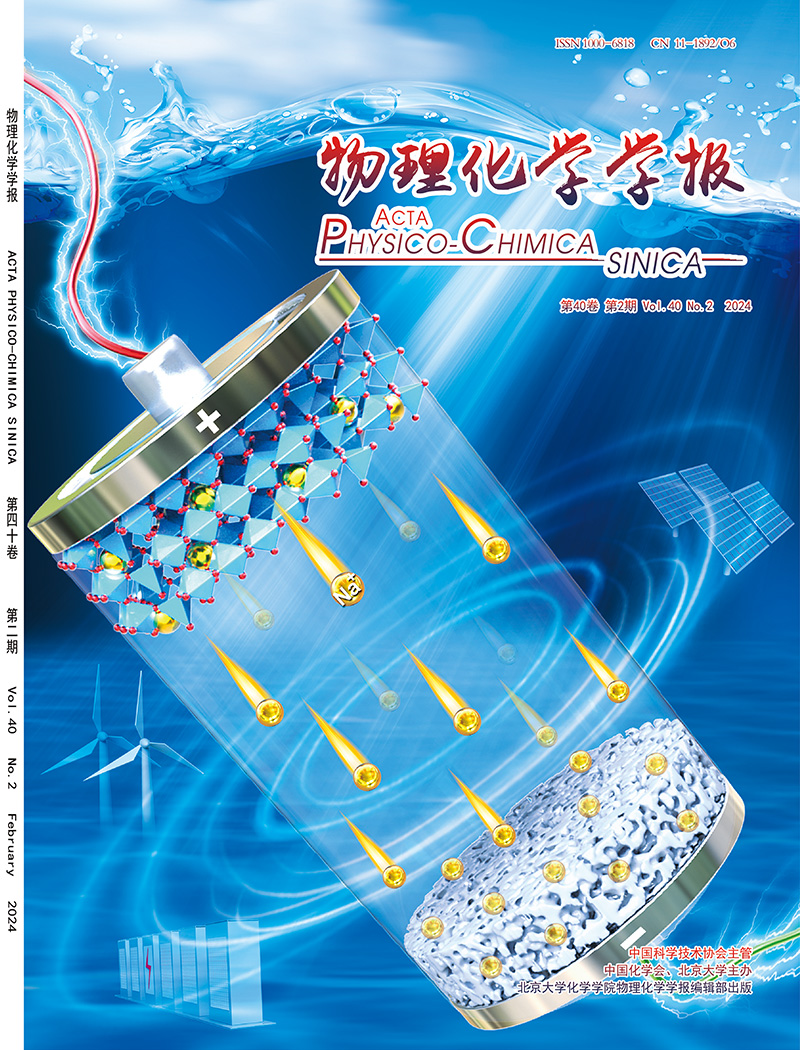Insights into the greatly improved catalytic performance of N-doped BiOBr for CO2 photoreduction
IF 13.5
2区 化学
Q1 CHEMISTRY, PHYSICAL
引用次数: 0
Abstract
Photocatalytic carbon dioxide (CO2) reduction represents a hopeful approach to addressing global energy and environmental issues. The quest for catalysts that demonstrate both high activity and selectivity for CO2 conversion has attracted significant attention. In this study, ultrathin N-doped BiOBr was synthesized using a simple straightforward method. Systematic experimental results indicated that N-doping reduced the thickness of the BiOBr nanosheets and increased their specific surface area. Moreover, the efficiency of photogenerated charge carrier migration and the CO2 adsorption capacity were significantly enhanced, contributing to improved CO2 photoreduction performance. Experimental results showed that the 2N-BiOBr exhibited the best catalytic performance, with a CO evolution rate of 18.28 μmol·g−1·h−1 and nearly 100% CO selectivity in water, which was three times higher than that of pure BiOBr. The potential photocatalytic mechanism was investigated using in situ FTIR analysis and DFT simulations. Mechanistic studies revealed that N atoms replaced O atoms as adsorption centers, enhancing the strong adsorption selectivity towards CO2 over O–H in BiOBr and facilitating the formation of key reaction intermediates. This study provides new perspectives on the creation and developmen of effective photocatalytic materials, offering theoretical support for the application of photocatalytic technology in energy and environmental science.

n掺杂BiOBr对CO2光还原催化性能的极大改善
光催化二氧化碳(CO2)减排是解决全球能源和环境问题的一种有希望的方法。对具有高活性和选择性的CO2转化催化剂的探索引起了极大的关注。本研究采用简单直接的方法合成了超薄n掺杂BiOBr。系统的实验结果表明,n掺杂降低了BiOBr纳米片的厚度,增加了其比表面积。此外,光生载流子迁移效率和CO2吸附能力显著提高,有助于改善CO2光还原性能。实验结果表明,2N-BiOBr表现出最好的催化性能,CO的析出速率为18.28 μmol·g−1·h−1,CO在水中的选择性接近100%,是纯BiOBr的3倍。利用原位FTIR分析和DFT模拟研究了潜在的光催化机理。机理研究表明,N原子取代O原子成为吸附中心,增强了BiOBr对CO2在O - h上的强吸附选择性,促进了关键反应中间体的形成。本研究为高效光催化材料的创造和开发提供了新的视角,为光催化技术在能源和环境科学中的应用提供了理论支持。
本文章由计算机程序翻译,如有差异,请以英文原文为准。
求助全文
约1分钟内获得全文
求助全文

 求助内容:
求助内容: 应助结果提醒方式:
应助结果提醒方式:


